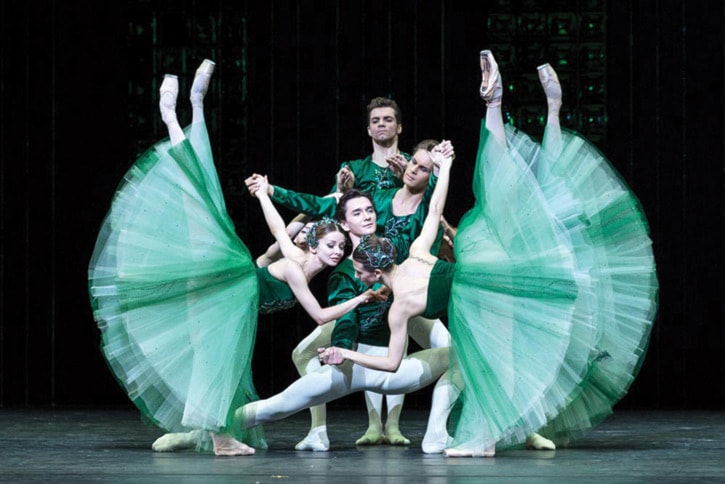Live from the Moscow stage, The Bolshoi Ballet performs Jewels Sunday, Jan. 19 at the Salmar Classic.
The ballet was created in part by American George Balanchine, one of the 20th century’s most prolific and famous choreographers.
It was a collaboration born of Balanchine’s chance encounter with Claude Arpels.
Arpels, of the world-renowned jewelry family, had been living in New York since 1939 when he met the famous choreographer and co-founder of the New York City Ballet through a mutual friend, violinist Nathan Milstein.
Arpels went on to invite Balanchine to the Van Cleef & Arpels boutique on Fifth Avenue, to discover the Maison’s most beautiful creations.
From their shared passion for precious stones was born an artistic relationship that resulted in Balanchine’s new ballet and its sumptuous costumes.
April 1967 in New York marked the premiere of Jewels, a three-part non-narrative ballet using the names and colours of three precious stones.
Jewels is unique: a full-length, three-act plotless ballet that uses the music of three very different composers. Balanchine was so inspired by the artistry of the jewelry Arpels designed, he chose music he believed revealed the essence of each jewel.
Each section of the ballet is distinct in both music and mood.
Emeralds, which Balanchine considered “an evocation of a France of elegance, comfort, dress and perfume,” recalls the 19th century dances of the French Romantics.
Rubies is crisp and witty, epitomizing the collaboration of Stravinsky and Balanchine.
Diamonds recalls the order and grandeur of Imperial Russia and the Maryinsky Theater, where Balanchine was trained.
Mary Clarke and Clement Crisp, who co-authored The History of Dance, wrote: “If the entire imperial Russian inheritance of ballet were lost, Diamonds would still tell us of its essence.”
Emeralds is set to the music of Gabriel Urbain Fauré, whose life and work bridged the eras of Romanticism and Impressionism.
He wrote piano and chamber music, as well as incidental music for plays such as Pelléas et Mélisande and Shylock; he composed operas and many songs set to the words of French poets of the late 19th century, especially Verlaine.
Rubies is danced to the music of Igor Stravinsky, who was born in Russia and is acknowledged as one of the great composers of the 20th century.
His work encompassed styles as diverse as Romanticism, Neoclassicism and Serialism.
His music has been used in more than 30 ballets originating with New York City Ballet from 1948 through 1987, including Danses concertantes, Orpheus, The Cage, Agon, Symphony in Three Movements, Stravinsky Violin Concerto, Concerto for Two Solo Pianos, Suite from L’histoire du soldat, Concertino and Jeu de cartes.
Diamonds is danced to the work of Peter Ilyitch Tchaikovsky. He studied at the Conservatory in St. Petersburg, where Balanchine later studied piano in addition to his studies in dance.
One of the most popular and influential of all romantic composers, Tchaikovsky’s work is expressive, melodic, grand in scale, with rich orchestrations.
His output was prodigious and included chamber works, symphonies, concerti for various instruments, operas, and works for the piano. His creations for the ballet, composed in close partnership with Marius Petipa, include Swan Lake, The Nutcracker and The Sleeping Beauty.
See Jewels live from Moscow on the big screen at 1 p.m. at the Salmar Classic. Tickets are available at the Salmar Grand.
